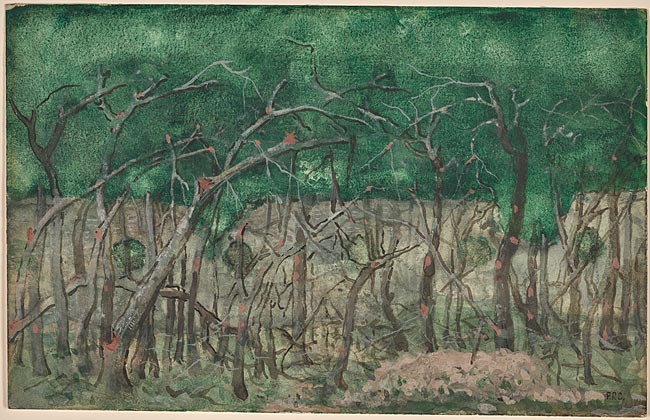

Puvis de Chavannes is best known for his calm, classicizing murals and canvases, work very different in tone from this striking watercolor. He was, however, deeply affected by the Franco-Prussian War (1870-71) and produced numerous works related to the conflict and the deprivation it brought about. The unnaturally bent trees, the oppressive density of the foliage, and the raw red spots resembling wounds on the broken trunks symbolize the consequences of violent upheaval. Puvis often used a stand of trees with their foliage uniting into a mass in the backgrounds of his panoramic decorative canvases. Still, this dense screen of trees does not correspond to any painted work. A second watercolor of a War-torn Landscape with Brambles, ca. 1871 (location unknown, see Price 2010, p. 75) further explores this idea of an impenetrable and damaged landscape as a manifestation of anguish. As Aimee Brown Price noted, Puvis first significant batch of watercolors was made at this time, when the artist fled his Paris and Neuilly studios to work at Versailles in 1871.
Robinson, Hamiliton, Jr. former owner.
Robinson, Hamiliton, Mrs. former owner.
Price, Aimée Brown, and Puvis De Chavannes, Pierre. Pierre Puvis De Chavannes / Aimée Brown Price. New Haven [Conn.] ; London: Yale UP, 2010, p. 75.
